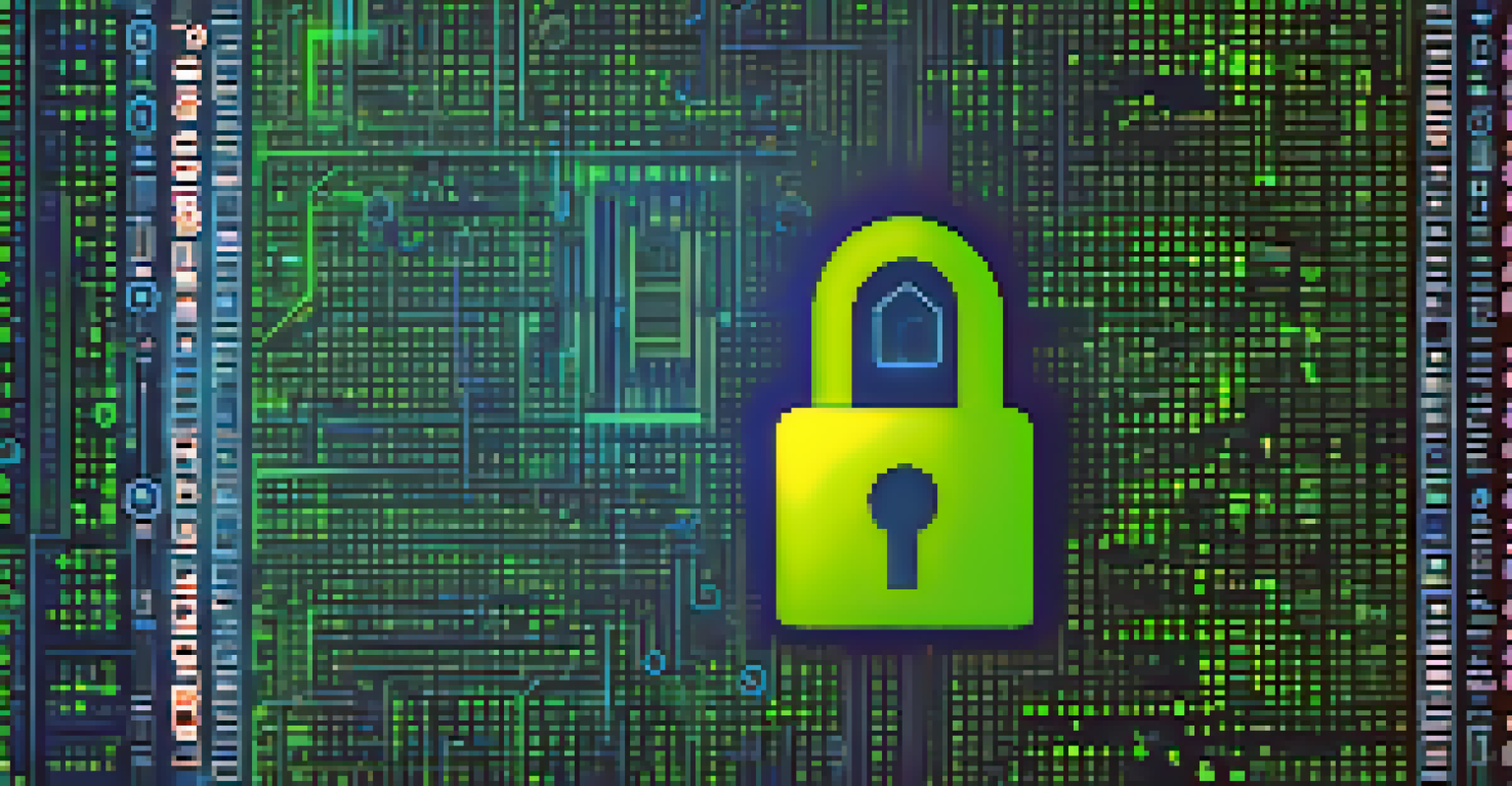Patient Data Security in Telemedicine: Protecting Sensitive Info

Understanding the Importance of Patient Data Security
In today’s digital world, safeguarding patient data is more crucial than ever. Telemedicine has revolutionized healthcare by allowing patients to consult doctors from the comfort of their homes. However, this convenience comes with significant risks, as sensitive information can be vulnerable to breaches.
The greatest threat to our planet is the belief that someone else will save it.
Imagine having a private conversation with your doctor, only to find out that someone else was listening in. This scenario highlights why healthcare providers must prioritize data security. Protecting patient information is not just about compliance; it’s vital for maintaining trust between patients and providers.
Moreover, robust data security measures can prevent costly breaches that could damage a provider's reputation. By understanding the importance of data protection, healthcare organizations can create a safer environment for both patients and practitioners.
Common Threats to Patient Data in Telemedicine
Telemedicine is not without its risks. Cyberattacks, such as phishing and ransomware, are increasingly targeting healthcare institutions. For instance, a phishing email could trick staff into revealing sensitive patient information, leading to severe consequences.

Another threat comes from unsecured networks. Many patients connect to telemedicine services using public Wi-Fi, which can be less secure. This poses a risk, as hackers can easily intercept data being transmitted over these networks.
Data Security is Essential in Telemedicine
Safeguarding patient data is crucial for maintaining trust and preventing costly breaches in the evolving world of telemedicine.
Additionally, data breaches can occur due to inadequate software security. If a telemedicine platform doesn't have robust encryption or fails to update its security protocols, patient information could be at risk. Understanding these threats is the first step in implementing effective safeguards.
Key Regulations Governing Patient Data Security
In the realm of healthcare, regulations play a pivotal role in ensuring patient data security. The Health Insurance Portability and Accountability Act (HIPAA) is one of the most significant regulations in the U.S., setting the standard for protecting sensitive patient data. It mandates that healthcare providers must implement security measures to safeguard personal health information.
Data is a precious thing and will last longer than the systems themselves.
Additionally, the General Data Protection Regulation (GDPR) applies to organizations handling data of EU citizens, emphasizing the need for explicit consent and robust data protection. These regulations not only guide healthcare practices but also empower patients to have more control over their information.
Staying compliant with these regulations is essential for healthcare providers. Non-compliance can result in hefty fines and damage to reputation, underscoring the importance of understanding and adhering to these legal frameworks.
Best Practices for Securing Telemedicine Data
Implementing best practices is key to securing patient data in telemedicine. First and foremost, using strong encryption methods can protect data during transmission. This ensures that even if data is intercepted, it remains unreadable to unauthorized parties.
Regularly updating software is another crucial step. Outdated software can have vulnerabilities that hackers exploit. By keeping systems updated, healthcare providers can minimize risks and ensure they are protected against the latest threats.
Common Threats to Patient Data
Cyberattacks, unsecured networks, and inadequate software security pose significant risks to patient information in telemedicine.
Lastly, providing staff training on data security awareness can significantly enhance protection. Educating employees about common cyber threats and safe practices creates a culture of security within the organization, further safeguarding patient data.
The Role of Technology in Data Security
Technology plays a vital role in enhancing data security for telemedicine. Advanced tools such as artificial intelligence (AI) can help detect unusual patterns and potential threats in real-time. For example, AI can flag suspicious logins or unusual data access, allowing for prompt investigation and action.
Additionally, secure telemedicine platforms often incorporate multi-factor authentication (MFA). This adds an extra layer of security by requiring users to provide multiple forms of verification before accessing sensitive information. MFA significantly reduces the risk of unauthorized access.
Lastly, using secure cloud storage solutions ensures that patient data is safely stored and backed up. Cloud providers often have robust security measures in place, making them a reliable option for healthcare organizations looking to secure their data.
Patient Awareness and Involvement in Data Security
Patients also play a crucial role in data security. Being aware of their rights and the importance of protecting their information can empower them to take action. For instance, patients should always ask healthcare providers about the measures in place to safeguard their data during telemedicine consultations.
Furthermore, patients should also practice safe online behavior, such as using strong passwords and being cautious about sharing personal information. Encouraging patients to take these steps can help create a collaborative effort in protecting sensitive data.
Best Practices Enhance Data Protection
Implementing strong encryption, regular software updates, and staff training are vital steps in securing telemedicine data.
By fostering a partnership between providers and patients in data security, everyone benefits. This collaborative approach can enhance trust and improve the overall telemedicine experience.
Future Trends in Telemedicine and Data Security
As telemedicine continues to evolve, so do the challenges and solutions regarding data security. One emerging trend is the use of blockchain technology, which can offer a secure way to store and share patient data. Blockchain's decentralized nature makes it difficult for hackers to manipulate or access sensitive information.
Additionally, the rise of telehealth apps is prompting developers to prioritize security features from the outset. With more patients relying on mobile devices for consultations, ensuring these applications are secure is paramount in protecting patient data.

Finally, as regulations continue to adapt to technological advancements, healthcare providers must stay informed about new compliance requirements. Staying ahead of these trends will be crucial for maintaining data security in an increasingly digital healthcare landscape.